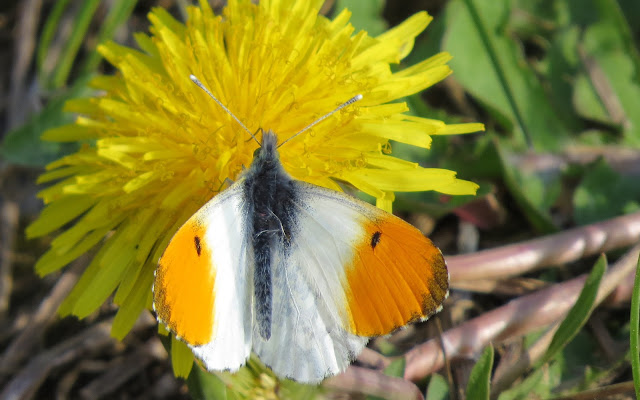| Beech tree in Rendlesham Forest |
I often go foraging in the local countryside, but I only gather the more familiar wild foods such as elderflowers, blackberries, ramsons, sloes etc. I don't know as much about wild foods as I'd like to, and so I've been missing out on many of the hedgerow plants that I could use in a meal. I'm also aware that a little knowledge can be a dangerous thing in foraging; especially when many of the hedgerow plants can look like each other. So, to improve my knowledge, I've just been on a short course. I can only learn so much on a single course, but it has taught me about a few more plants to gather on a foraging trip. The course I joined was run by Food Safari and held in Rendlesham Forest in Suffolk. Our group wandered along a forest path identifying plants and tasting them, before gathering leaves to make a salad. Amazingly, on such a dull, cloudy day, the rain actually held off (I think it would have been pretty miserable in a downpour).
The first food we identified was a fungus, with the common name of jelly ear, which was growing on an elder tree. I'm often foraging food from elder trees but the food has always been the flowers or the berries; I didn't know about the fungus. I think the fungi we saw on this particular tree weren't fresh enough to eat, and in any case they have to be cooked (so, to be honest, I've still to find out what they really taste like).
We also gathered the common plant chickweed...
Chickweed can be added with young leaves from different trees and plants such as hawthorn, hedgerow garlic (or garlic mustard/Jack-by-the-hedge) and wild herbs to make a forest salad. I find some of these leaves have a mild taste so a good dressing is definitely needed. Fresh, young leaves are important as "older" leaves can taste bitter. On our course, we tasted hedgerow garlic in a pesto with Parmesan cheese and ground almonds. I was a bit hesitant to try this, because I don't usually like almonds, but it was really delicious.
We also made up some woodsman's tea with nettles and pine needles. I have to admit that I've never fancied trying stinging nettles in anything, although I have been told that nettle beer is good. But one drink I was keen to try was some already prepared beech leaf noyau. I've heard of this and always fancied making it - and now I'm definitely going to, because it was very good. Beech leaf noyau is a liqueur that combines fresh beech leaves, gin, sugar and brandy - and I'll be gathering some beech leaves in the next few days to make it. It should be ready to drink in the next few weeks, so I hope to post my results of my own concoction, then!
The foraging course lasted about two hours. David and I both went on it, and we've come away with some new ideas for recipes to try over the summer. I'm also keen to improve my (still) limited knowledge of wild food.
On the smallholding
Back at home, our rhubarb-in-a-barrel is ready. I've promised myself I'm going to explore some new rhubarb recipes for it this year (although I'm still tempted to fall back on crumble and fool, because they're such favourites...)
In the trees and hedges, the summer visitors are still returning, like this little whitethroat...
The "local" cuckoo came back at last on 7 May (which is much later than usual) making a dramatic entrance by flying right over my head calling loudly. It's the first cuckoo I've heard this year, which I think ties in with other reports that they're becoming much rarer.
And this is my first sight of an orange tip on the smallholding this year...
And a speckled wood by the beehives...
I'm behind with my weeding in the cottage garden patch, but now everything is on hold because Pip has decided to nest amongst the lupins...
I'm sure she's crushing one of my favourite perennials - and I think from her sideways glance she knows that too. The wire fence at the back, which she's now bent, was supposed to keep her out. Still, if she's happy, I'll just have to live with it for a bit.
Bluebells
Finally, I had to include more pics of my local bluebell wood, because I can't get over how stunning the bluebells look this year...













